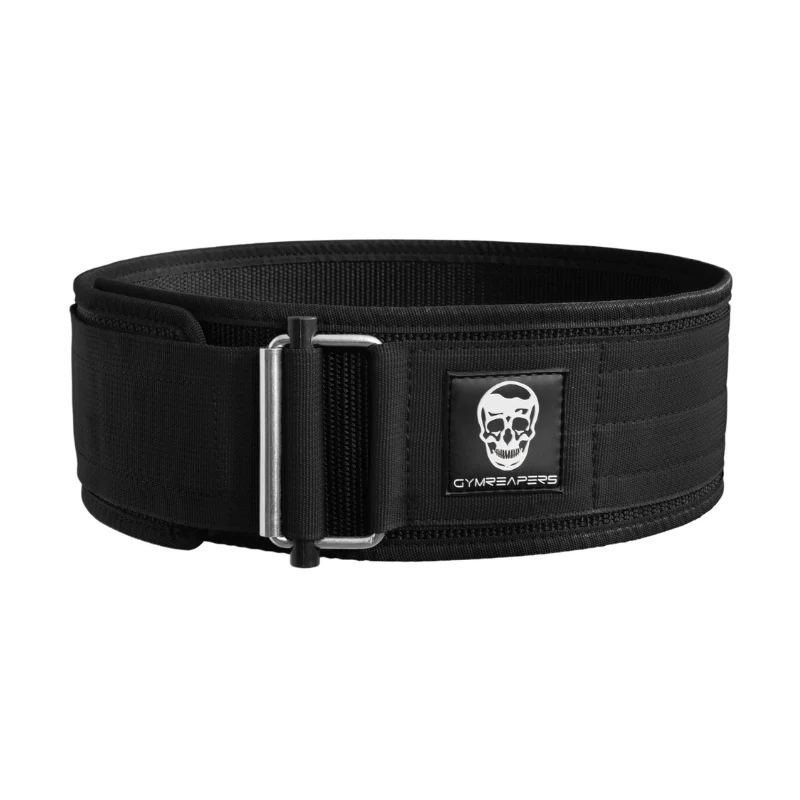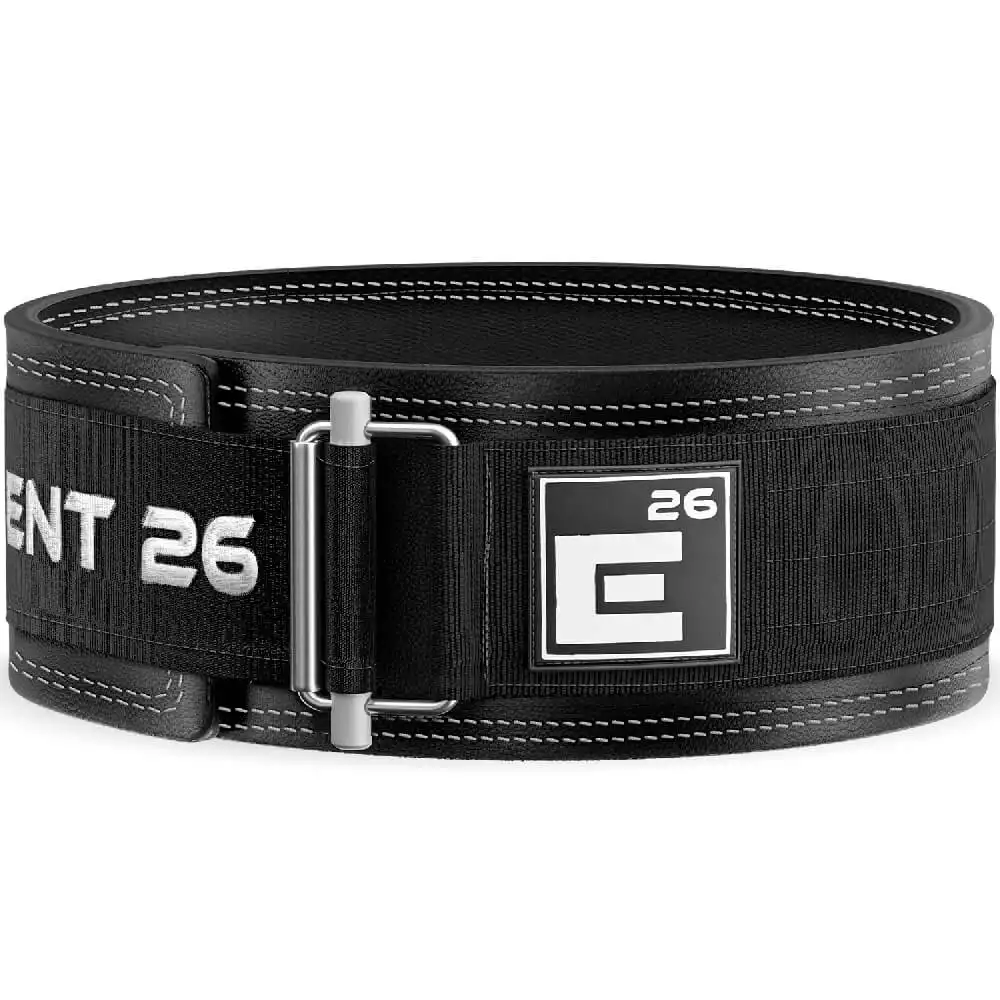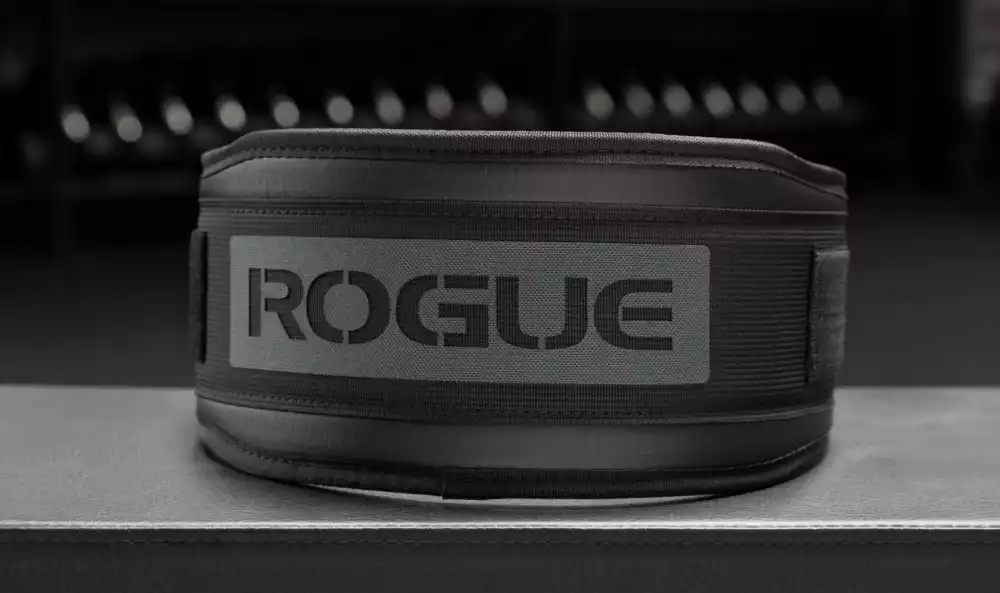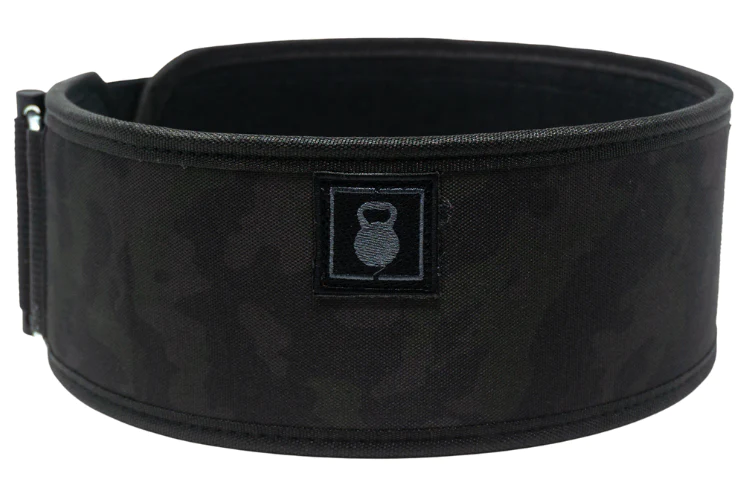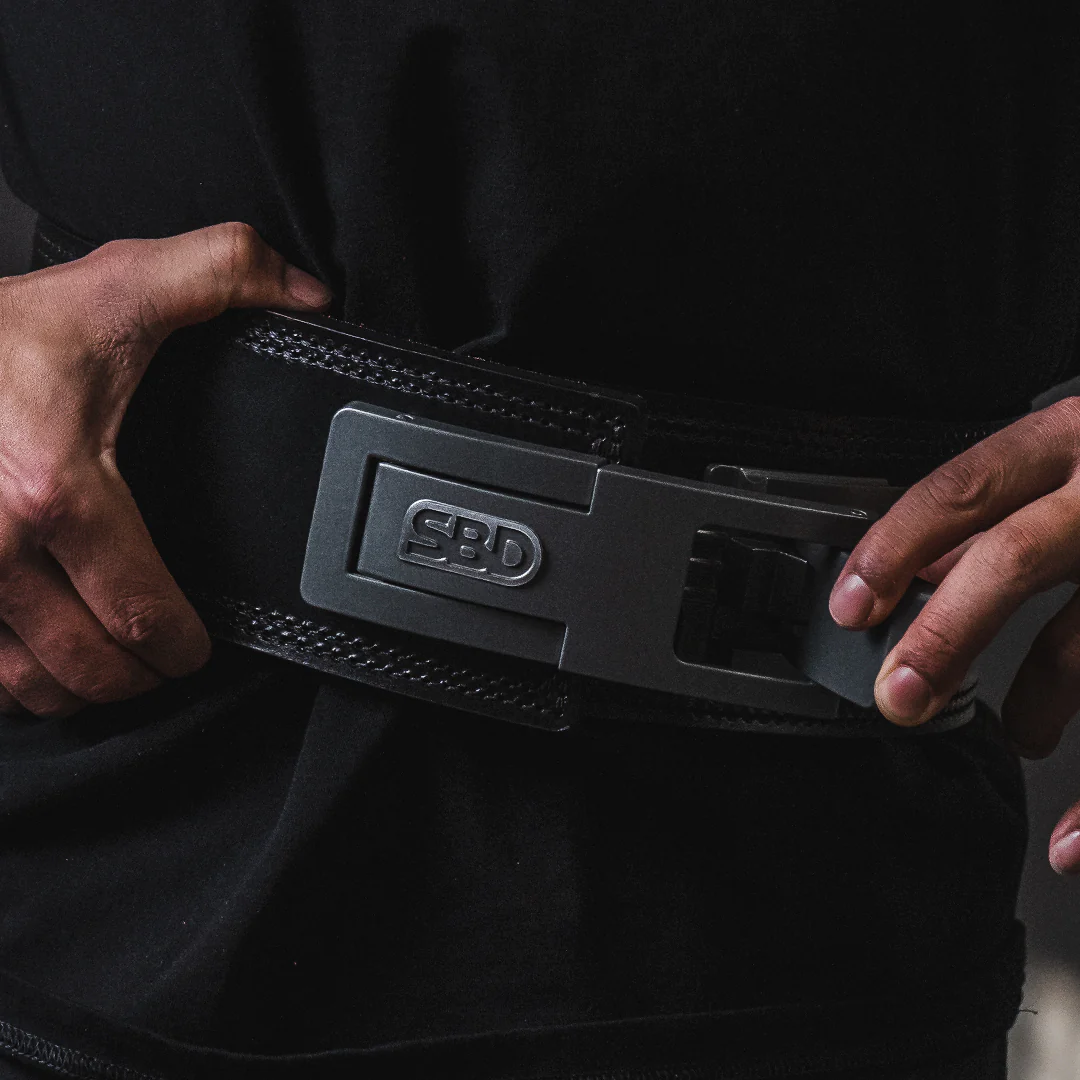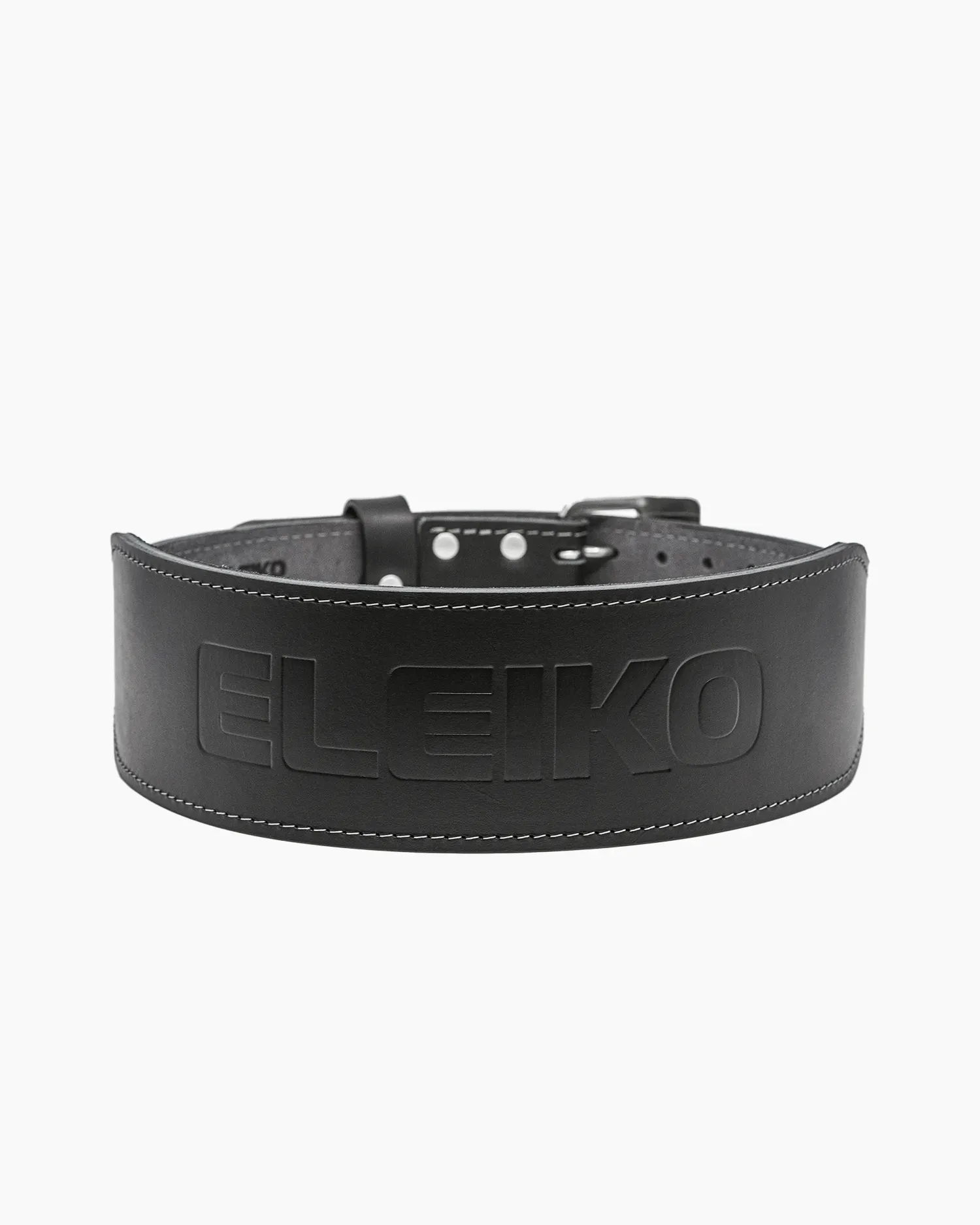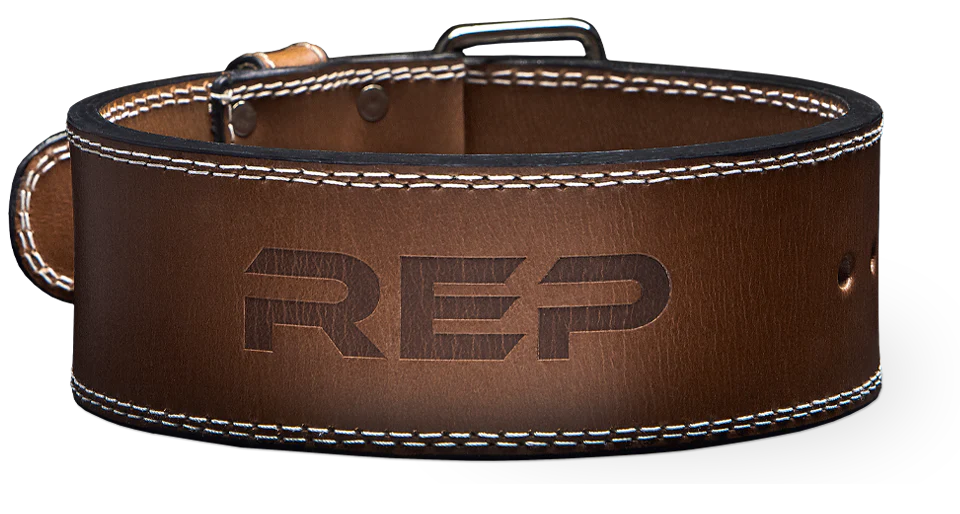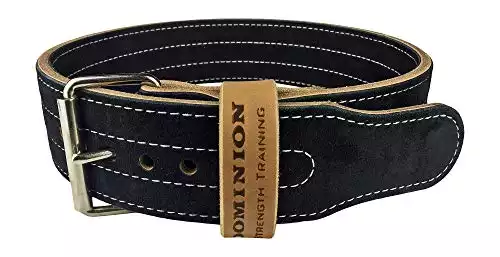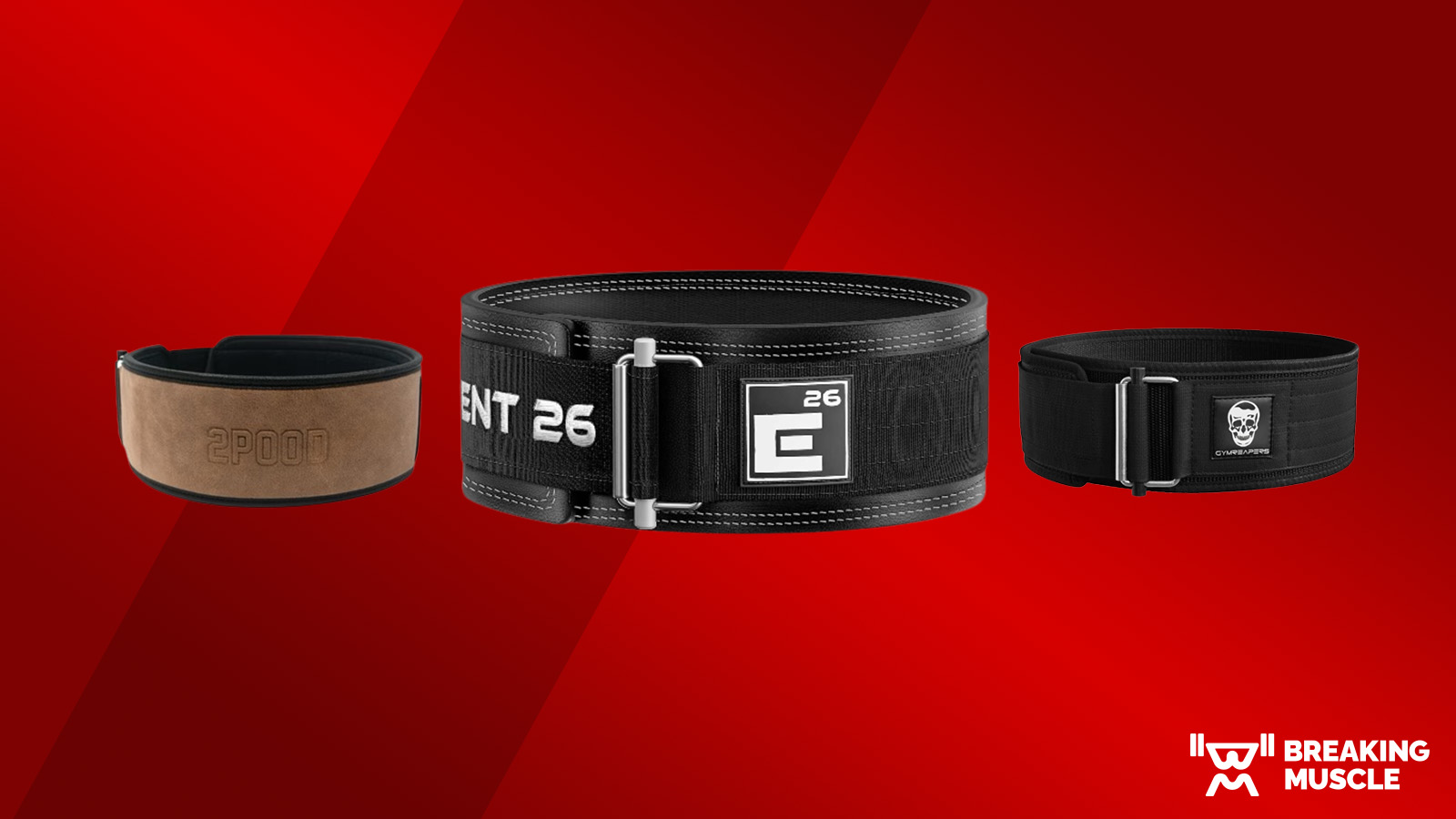
Whether you train in a garage gym with the best home gym equipment or in a commercial lifting gym, a weightlifting belt can be a useful tool to add to your arsenal. It increases your stability by giving you something to push against as you brace your core, reinforces proper lifting technique, and can give you a boost of confidence if you begin to doubt your abilities.
When shopping for the best weightlifting belt, you need to consider whether leather or nylon is better for your needs and how much support you want your belt to provide. To help you narrow down your selection, I’ve compiled a list of the top eight lifting belts. Whether you’re a powerlifter, CrossFitter, Olympic weightlifter, or someone who trains for overall health and wellness, you can find the right belt for you.
Our Top Picks for the Best Weightlifting Belts
Best Weightlifting Belt for CrossFit: Gymreapers Quick Locking Weightlifting Belt
Pros
- Available in lots of color options
- Comes with a lifetime replacement guarantee
- Affordable
- Double-stitched for durability
Cons
- Not approved for powerlifting competitions
- Runs small
When you’re transitioning from heavy lifts to handstand push-ups, box jumps, or other dynamic exercises that come up in CrossFit WODs (workouts of the day), you need a belt that is easy to tighten and loosen and doesn’t limit your movement. The Gymreapers Quick Lock Weightlifting Belt is ideal for these scenarios because the nylon material molds to your body and is comfortable to wear. Plus, you can adjust the Velcro strap in just a couple of seconds.
It’s not as supportive as a leather powerlifting belt, but you’ll still feel stable and secure when lifting, thanks to the four-inch width. The belt is double-stitched to ensure it can handle tons of abuse, and the Velcro will maintain its stickiness as long as you keep it clean.
The affordable price of around $35 makes it one of the more budget-friendly belts on this list. You can choose from a wide array of colors and prints, including gray, pink, red, or black camo. There’s even an option with large Velcro areas where you can add patches to show off your personality and support your favorite brands.
The Gymreapers Quick Lock Weightlifting Belt is also available in sizes from XS to XXL to fit a large range of body types. However, it runs small, so you may want to size up for a more comfortable fit.
RELATED: Best Home Gym Machines
Best Budget Weightlifting Belt: Element 26 Hybrid Leather Weightlifting Belt
Pros
- Comes with a lifetime warranty
- Reinforced, heavy-duty stitching
- Self-locking buckle
Cons
- Too rigid for CrossFit or functional fitness workouts
- Only available in black
If you’re a recreational lifter who doesn’t compete in a strength sport, you may not want to drop hundreds of bucks on a leather lifting belt. At the same time, you may need a belt that offers more support than a nylon belt can provide. In that case, the Element 26 Hybrid Leather Weightlifting Belt is a solid choice that is more than half the price of some traditional leather belts.
Besides being budget-friendly, this belt is unique in that it’s made of leather but features a nylon strap with a heavy-duty Velcro closure, unlike traditional leather belts with prong or lever closures. The Velcro fastening system makes the belt suitable for workouts where you need to adjust the tightness or put the belt on and take it off quickly. There’s also a self-locking buckle to keep the strap secured to your body in case the Velcro comes undone.
However, the leather isn’t flexible and can restrict your movement. If you want a belt that will move more seamlessly with your body as you transition from one exercise to the next, a nylon belt will be better.
Another thing to note is that the Element 26 Hybrid Leather Weightlifting Belt is only six millimeters thick, so it may not be supportive enough for very heavy weight training workouts. It’s also only available in black, so if you want something that will stand out more, you’ll need to look elsewhere.
Best Nylon Weightlifting Belt: Rogue Fitness USA Nylon Lifting Belt
Pros
- Available in five different colors
- Ripstop exterior and antimicrobial interior
- Tapered design allows for more back support without the belt digging into your hips
- Can add patches for more customization
- Affordably priced
Cons
- Not approved for powerlifting or Olympic weightlifting competitions
- Velcro may become less sticky over time
The Rogue Fitness USA Nylon Lifting Belt is supportive yet comfortable due to the nylon material and five-inch width along the back. But it also tapers to four inches along the sides and in the front to keep it from digging into your hips and stomach. It’s great for those who need more stability than a four-inch belt can provide but want something that is also flexible, lightweight, and won’t dig into the stomach.
The belt is available in five colors: black and gray, blue and gray, black and pink, black and camo, and gray and red. There’s also a small Velcro area on the webbing where you can add patches to rep another brand.
The belt itself is durable, as it features a ripstop exterior that’s resistant to fraying and tearing. It also has an antimicrobial interior to prevent bacteria from sweat and germs from accumulating on it. However, the Velcro can lose stickiness after about a year, especially if it gets dirty often.
RELATED: 9 Best Adjustable Dumbbells
Best Velcro Weightlifting Belt: 2POOD Weightlifting Belt
Pros
- Large size range
- Available in lots of prints
- Sticky Velcro
Cons
- Not approved for powerlifting competitions
With a Velcro belt, there’s always a chance it can pop off in the middle of a lift, increasing your risk of a severe injury. 2POOD weightlifting belts reduce the likelihood of that happening because they have a hook-and-loop WODClamp locking mechanism in addition to a Velcro strap. If the Velcro comes undone, the WODClamp will keep the strap in place and allow the belt to remain tight around your midsection. The Velcro is pretty sticky, though, so it’s unlikely that it would come unfastened unless you’re moving some serious weight or dirt, chalk, or lint has accumulated on it.
The 2POOD lift belt features a sturdy nylon exterior with a foam core and comes in dozens of fun prints, such as sunflowers and donuts. If you’re willing to pay for it, you can even work with 2POOD’s design team to get a custom belt.
I used a 2POOD lifting belt for my strength training sessions and CrossFit workouts for over two years and loved how supportive yet flexible it was. I would often leave it on throughout an entire CrossFit WOD because it was so easy to loosen or tighten it based on whatever exercise I was doing. I never felt like it limited my movement, and if I did take it all the way off in the middle of a WOD, it only took a few seconds to put it back on.
My only complaint is that the four-inch belt was too wide for my torso. It didn’t bother me much during squats, but I could feel it digging into my ribcage during deadlifts. When I still used a 2POOD belt, the company only had four-inch belts available, but it now offers three-inch belts as well. The narrower belt is worth considering if you have a short torso, though it’s only available in sizes XXXS to medium.
2POOD also sells six-inch belts, called the Metcon belt, for those who need extra support on their lower backs during heavy lifts.
Best Lever Weightlifting Belt: SBD 13mm Lever Belt
Pros
- Inclusive sizing
- Gliding lever is easy to adjust
- Compliant with numerous powerlifting federations’ standards for belts
Cons
- Expensive
- Red suede may bleed onto clothing
- Can take several weeks to break in
Lever belts, in general, are easier to adjust than prong belts. But for a belt with a smoother, more seamless lever than much of its competition, you can’t go wrong with the SBD 13mm Lever Belt. Due to how easy it is to adjust the lever, you can keep the belt on between all of your sets and adjust its tightness when you lift or when you rest. Once you tighten the belt, the lever stays in place and won’t pop open — lifters who can squat over 1,000 pounds have worn this belt with no issues!
The belt is available in sizes ranging from small to 5XL, making it suitable for a wide range of body types. It’s double-stitched for extra durability, and SBD treats the leather over five months to ensure maximum stiffness and stability. Note, though, that the leather can take several weeks to break in, so this isn’t a belt you can start wearing the second you receive it.
The suede interior helps prevent the belt from sliding around your torso, but the red dye can bleed onto your clothes if you get sweaty. It’s best to wear dark clothing for the first few months of using this belt to prevent ruining your light-colored shirts.
The SBD belt is four inches wide all the way around to offer as much support as possible, but the extra width and lack of tapering mean it may dig into the ribs if you have a short torso. It’s also the most expensive leather belt on this list. However, the quality of the leather, the belt’s durability, and the fact that it’s approved by various powerlifting federations make it a solid choice for competitive powerlifters.
Best Olympic Weightlifting Belt: Eleiko Weightlifting Leather Belt
Pros
- Treated with a coating to help prevent scratches
- Not as expensive as other leather belts
- Tapers along the sides and in the front for more comfort
Cons
- May not offer enough support for powerlifting
This leather belt is the latest iteration of Eleiko’s premium leather Olympic weightlifting belts. It’s four inches wide in the back but tapers in the front so that it won’t dig into your torso when you hinge at the hips for deadlifts or cleans. The soft leather also offers your body more freedom of movement when you perform the dynamic Olympic lifts.
The belt has a suede interior to make it more comfortable and help keep it in place on your torso, and the exterior is coated with a treatment to prevent scratches and scuff marks — a huge plus if you want your belt to look like new even after years of use.
It’s only eight millimeters thick, so it may not be supportive enough for elite powerlifters. But it’s a great pick for casual lifters or even competitive Olympic weightlifters who need more support than a nylon belt provides but less rigidity than a 10- or 13-millimeter leather belt.
Best Leather Weightlifting Belt: REP Fitness Lifting Belt
Pros
- Short break-in period
- Sealed and burnished edges help prevent moisture damage from sweat
- Single-prong belt is easier to adjust than double-prong belts
Cons
- Not IPF-approved
- One-inch hole spacing may be too big of a jump for small adjustments
The REP Fitness Lifting Belt is an affordable but supportive and attractive option for those who want a leather belt but can’t afford to spend hundreds of dollars on one. It’s four inches wide and 13 millimeters thick, so you’ll get optimal support when lifting maximal or near-maximal weights. The leather gets softened as it undergoes a vegetable tanning process, meaning the belt is comfortable to wear and doesn’t require a long break-in period.
This belt has a single-prong fastening system, allowing for quicker adjustments than you’d find in a belt with a double-prong buckle. The edges are sealed and burnished to prevent moisture from sweat from damaging the material, and the holes are spaced one inch apart. This spacing may be too much if you only need a slight adjustment, though it’s common amongst leather lifting belts.
REP suggests sizing down if you’re in between sizes, but based on customer reviews, it’s better to size up instead. Otherwise, the belt may be too snug, and you won’t have much room to adjust it further if your waist circumference changes in the future.
Best Weightlifting Belt for Squats: Dominion Three-Inch Leather Lifting Belt
Pros
- 11 holes allow you to get a more custom fit
- Comes with a lifetime warranty
- Quicker break-in time than 13-millimeter belts
- Rounded edges for more comfort
Cons
- Not approved for powerlifting competitions
While four-inch belts are some of the most common you’ll see in the gym, three-inch belts like the Dominion Leather Lifting Belt are better suited for certain lifters, such as those with short torsos. They don’t dig into the ribs or pinch your torso when squatting, so you can focus more on your lifts instead of how uncomfortable your belt is. The three-inch width also makes the belt good for deadlifts because you can more easily get into an optimal starting position.
The Dominion Leather Lifting Belt has 11 holes that are spaced one inch apart, allowing you to get a snug and customized fit even if your size changes over time. It’s 10 millimeters thick and won’t be as supportive as a 13-millimeter belt, but it will still provide more stability for heavy lifts than a nylon belt. Plus, it has a shorter break-in period than the thicker belts, so you can start using it sooner.
The interior is lined with gray suede that helps keep it in place and prevents the belt from moving during your lifts. The roller buckle is another nice touch, as it makes adjusting the belt a more effortless process. The belt isn’t approved for powerlifting competitions, but because it’s more affordable than other leather belts, it’s a great choice for casual lifters who want a supportive but basic belt for strength training.
How We Chose the Best Weightlifting Belts
We selected an extensive array of leather and nylon belts to suit all types of athletes, whether you’re a powerlifter, Olympic weightlifter, CrossFitter, or casual gym-goer. Our list includes products with different widths and thicknesses to offer varying levels of support, and we also included options that come in multiple colors so you can show off your style at the gym.
All of the belts above are ones our staff has personally used for their own training or are from brands we know and trust, so we’re confident that their belts are high-quality.
Different Types of Weightlifting Belts
The two main types of weightlifting belts are leather and nylon. Within those categories, different thicknesses and widths are available. For leather belts, there are also multiple closure types to choose from. Understanding the differences between leather and nylon belts and their fastening mechanisms will ensure you pick the right one for your needs.
Leather Belts
Leather belts like the REP Fitness Lifting Belt come in various widths and thicknesses and come with lever or prong fastening systems.
Lever Belts
Lever belts are easier to put on and take off because you just have to slip the teeth into the holes you want and fasten the buckle. The downside of a lever belt is that when you get it, you fasten the buckle to the holes on the belt with a screwdriver and keep it there.
For this reason, it’s harder to ensure a proper fit if your waist size changes from day to day — for example, if you are bloated from a large meal you ate before training or wear a thick shirt one day and a thin shirt the next. Lifters who use lever belts often carry a screwdriver in their gym bags so they can change the buckle’s positioning on the belt when needed.
Prong Belts
Prong belts function similarly to the types of belts you’d wear with a pair of pants. You pull the strap through a buckle until it’s at your desired tightness, then push the prong through a hole in the belt and slip the strap through a loop to secure the excess material.
Prong belts are available as single-prong or double-prong. Single-prong belts are more affordable and easier to adjust because you don’t have to line up two prongs. But double-prong belts may offer more support and last longer because the pressure is more evenly distributed through the two prongs.
Some prong belts feature a roller buckle to help the leather slide through it more seamlessly. When using belts that don’t have a roller buckle, some lifters find that they need a friend to help them pull the strap through the buckle to get the desired level of tightness.
Width and Thickness
Leather belts are generally three or four inches wide and 10 to 13 millimeters thick. The narrower and thinner belts are easier to break in and more comfortable to wear, especially for those with short torsos. However, the wider and thicker belts offer more support, which is helpful when lifting heavier weights that are close to your one-rep max or attempting new PRs. You can also find leather belts that are wider in the back and narrower in the front, so you get a mix of support and comfort.
Nylon Belts
Nylon belts are more versatile because they’re flexible and mold to your body. They have a Velcro fastening system that allows for quick and easy adjustments. They’re ideal for Olympic weightlifting, where you perform fast and explosive lifts, or CrossFit, where you quickly transition from heavy lifts to cardio or gymnastics movements. They’re also good for high-rep sets because they’re more comfortable to wear for longer periods.
Nylon belts aren’t the best for powerlifting because the Velcro can come undone when you’re lifting heavy loads. However, belts like the 2POOD Weightlifting Belt feature additional clamps to keep the belt in place if the Velcro comes loose.
Like leather belts, nylon belts are often three or four inches wide. Some are as wide as eight inches. Many nylon belts are the same width all the way around, but others are tapered so that the back of the belt is wider and the front and sides are narrower. You’ll typically only find nylon belts with thicknesses up to 10 millimeters, though some, like the Gymreapers Quick Locking Weightlifting Belt, are closer to an inch thick.
Benefits of Weightlifting Belts
Wearing a weightlifting or powerlifting belt has many benefits, including reducing stress on the lumbar spine, helping prevent lower back injuries, and putting your mind at ease as you prepare to lift a heavy barbell. A lifting belt can also encourage proper lifting mechanics and may even help you add a few more pounds to your lifts.
Reduces Stress on the Lumbar Spine
Weightlifting belts increase intra-abdominal pressure and give you something to brace your core muscles against, which helps increase core stability and places less stress on the spine. As a result, you’re less likely to suffer from a severe back injury.
That said, a lifting belt won’t totally prevent injuries, so you shouldn’t throw one on and assume it will protect you from getting hurt. Lifting injuries are rare, but they can happen whether you wear a belt or not.
It’s also important to note that you shouldn’t use a lifting belt to push through severe back pain. It’s better to work through the root cause of your pain and take some time off, if necessary, rather than relying on a belt to mask your injury.
Encourages Proper Form and May Prevent Injuries
Having something to breathe into and brace your core against encourages you to remain tight and maintain stability when lifting weights. For example, it can serve as a reminder to keep your spine neutral during deadlifts or help prevent you from excessively arching your back during overhead presses.
Gives You More Confidence
It’s common to experience mental blocks when attempting a new one-rep max or performing large sets of squats or deadlifts. A lifting belt can help you overcome that by making you feel more secure and offering reassurance that your spine is more protected when you’re lifting heavy loads.
Helps You Lift More Weight
Wearing a weightlifting belt will not automatically add hundreds of pounds to your lifts. Perfecting your technique, improving your core strength, and adding more volume are some of the most important things you can do if you want to lift heavier weights. But because a lifting belt increases your core stability, you can usually lift a few more pounds with a belt than without one.
What To Look For When Buying a Weightlifting Belt
Price is always an essential component to look at when buying any gym equipment or gear. Beyond that, the material, fastening mechanism, width, and thickness of your weightlifting belt are also important features to evaluate. If you compete in powerlifting or Olympic weightlifting, you also need to ensure you buy a belt that meets your federation’s specifications.
Price
A weightlifting belt can cost around $30 or more than $200, depending on the materials, how thick it is, and whether or not it’s approved for powerlifting or weightlifting competitions (more on that below). Nylon belts are generally cheaper, while leather belts are more expensive. If you don’t specialize in a strength sport and aren’t lifting more than 400-500 pounds multiple days a week, you likely don’t need to spend more than $100 on a belt.
Material and Fastening Mechanism
The type of workouts you do will dictate the best belt material for your needs. For CrossFitters or functional fitness enthusiasts, a Velcro nylon belt that’s easy to fasten and unfasten is best. It will move with your body better as you transition from one movement to the next, and you won’t waste precious time fiddling around with prongs and buckles. For powerlifting, stiffer leather belts are better because they offer more stability for heavy lifts.
You can use either a leather or nylon belt for Olympic weightlifting, as long as it has enough mobility to move with you through the more dynamic lifts. Any metal components should be small enough that they don’t get in the way as you perform cleans and snatches.
Lifters who don’t specialize in any sport can choose leather or nylon, depending on budget and personal preference.
Another factor to consider when choosing between a nylon or leather belt is that a leather belt can have a long break-in period. It may take several weeks to get it to mold to your body. If you’re looking for something you can start using comfortably right away, a nylon belt may be better.
Competition Approval
If you compete in powerlifting or Olympic weightlifting, you’ll need a belt that’s approved for competition. Most national and international-level meets will have specifications your belt must meet to be considered legal for competition use. For example, the IWF states that lifters can only wear belts with a maximum width of 12 centimeters in competition.
In powerlifting, nylon belts aren’t allowed because there is a risk that the Velcro can come undone during a heavy lift and cause serious injuries. Furthermore, different federations have unique rules regarding the types of belts you can wear during meets. In many cases, you are also limited to a few select brands. One brand’s belt may technically meet your federation’s specifications, but you can’t use it in competition if it’s not on the approved belt list.
Width
The width of a weightlifting belt refers to how high it is from the bottom to the top. Most lifting belts are three or four inches wide, though some are six inches or wider.
The thicker belts will offer more back support, which is helpful if you have a history of back injuries. However, if you compete in powerlifting, you can’t use a belt wider than four inches during meets (though some sanctioned meets will allow six-inch wide belts). Similarly, belts wider than 12 centimeters (about 4.7 inches) are not allowed in Olympic weightlifting competitions.
If you don’t compete in powerlifting or weightlifting or have issues with back pain, the size of your torso is the most important factor regarding which belt width is best for you. Lifters with short torsos should consider a three-inch belt because it will be less likely to dig into your rib cage. Those with longer torsos should be able to use a four-inch belt comfortably.
Thickness
The thickness of a lifting belt refers to how thick it is from the interior that lays against your body to the outside that faces away from your body. Nylon belts can range from about six to 10 millimeters. As you can probably imagine, the thicker belts are more supportive. Either thickness is allowed in Olympic weightlifting competitions.
Leather belts are generally 10 or 13 millimeters thick. The thinner ones break in faster and are more affordable. The 10-millimeter belts are also better for beginners because they have less rigidity, making it easier to get accustomed to lifting while wearing a belt. On the other hand, the thicker belts offer more stability for heavy lifting.
Ten-millimeter and 13-millimeter leather belts are both allowed in powerlifting and Olympic weightlifting competitions. For non-competitive lifters, the thickness you get depends on how much you lift and how much support you want.
How To Use a Weightlifting Belt
Before getting into how to use a weightlifting belt, you should first understand how it works. It’s not something you just slap on before setting up for a lift or pull as tight as you possibly can. To get the most out of it, you need to ensure it fits well and you breathe properly while wearing it.
The belt should sit right above your hip bones, and you should be able to comfortably fit one of your fingers between it and your body. This will ensure a snug fit but leave some room for you to take a deep breath and brace properly before you begin your lift. If you feel any pinching or can’t breathe with the belt on, you need to readjust the tightness.
As for when you should wear a weightlifting belt, you should save it for when you’re lifting at around 80 percent or more of your one-rep max or doing lifts that load the spine, like squats, deadlifts, or the Olympic lifts. You shouldn’t put it on for every set or even every exercise. There’s no need to wear a lifting belt for warm-up sets (except your last warm-up set on heavy days) or when doing bicep curls, tricep extensions, or other isolation lifts.
RELATED: 5 Mistakes You Might Be Making With Your Weightlifting Belt
Final Thoughts
A high-quality weightlifting belt can make a huge difference in your strength training journey — not because it will add hundreds of pounds to your lifts but because it can help encourage proper lifting mechanics, protect your spine, and give you a mental boost when self-doubt starts creeping in.
Lifting belts are either nylon or leather, and which one you pick will depend on your sport and how much support you need. You can also choose between various widths, thicknesses, and closure types. If you’re confused about how to find the best weightlifting belt for you, use our reviews and buying guide above as a resource to ensure you find the right one for your needs.
FAQs
For powerlifting or workouts where you’re lifting several hundred pounds, a leather weightlifting belt is best because it offers the most core stability. For Olympic weightlifting or workouts where you transition from heavy lifting to other exercises quickly, a nylon belt is best because it’s more flexible and is easier to fasten and unfasten.
A general rule of thumb is to start using a belt for deadlifts when you can lift one to 1.5 times your body weight. Some people recommend using a belt whenever you lift 80 percent or more of your one-rep max. You may also choose to use a belt when doing sets of 10 or more reps so that your lower back doesn’t fatigue before the rest of your muscles do.
The best squat belt is the Dominion Three-Inch Leather Lifting Belt. It’s made of soft leather that doesn’t take long to break in, and the three-inch width provides stability without digging into your ribs as you move through the squat.
Most bodybuilders use leather lifting belts like the SBD 13mm Lever Belt because leather offers maximum stability for heavy compound lifts. Leather belts are typically 10 or 13 millimeters thick and three or four inches wide, but the thickness and width bodybuilders choose will depend on how much support they need.

